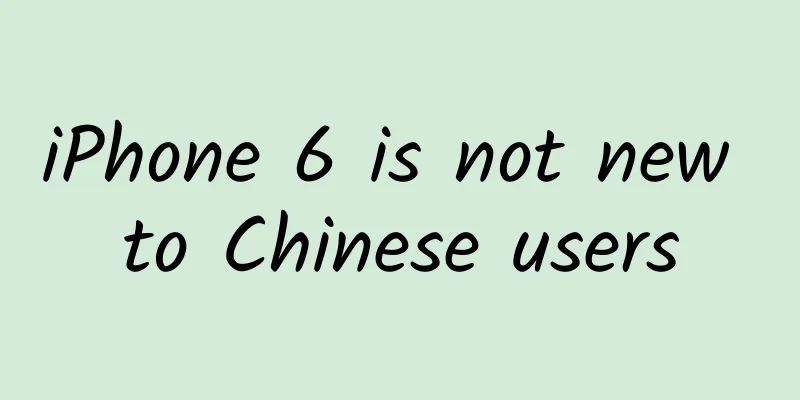What basic data and core indicators need to be collected to analyze product conversion retention?

|
Each product has its own core function, and therefore has corresponding indicators, and there is only one. At the same time, the core indicators will be divided into several secondary indicators. Taking WeChat reading count as an example, if the core indicator of a public account article is reading count, the corresponding secondary indicators and influencing factors will be: By further subdividing the main influencing factors, the direction of optimization becomes clear: continuously optimize or eliminate these influencing factors, and ultimately achieve the goal of increasing the number of readings. The data analysis of the entire product is similar to the above ideas, but the product structure is more complicated and there are more influencing factors. When the core function is used, the page where the core function is located will be exposed first, and then there will be path conversion on the core page. The calculation for a larger granularity is:
In many cases, core pages have different conversion paths. Different paths and corresponding conversion rates are distinguished:
This helps find the path to the optimal conversion rate. Core page path conversion rate Now many apps put the core page on the first screen, so the core page path conversion rate = 1. The next thing to consider is the "function conversion rate" After maximizing the exposure of the core page, you need to optimize and adjust the usage rate of each function in the page.
This is a simple calculation of the modules that users use the most. Because the content that can be displayed on a mobile phone screen is limited, the usage of a function has a huge relationship with the number of times it is viewed. (The core functions must be seen on the first screen, nonsense!) Therefore, you also need to know the conversion rate of the function itself
If you find that a module has very few exposures but a very high conversion rate, you should know what to do. Core page function analysis The so-called functional retention refers to the number of users who have performed specified operations on the day and return to the user after N days. User analysis: User stickiness and activity in using different product functions Sometimes, you may find that after preparing three killer features A, B, and C, you discover that users come back to use your product because of feature D. ( Zuji is an example) Yes, the world is so cruel. Retention rate of users of a certain function in different cities 1. The above is basic data collection and the establishment of core indicators. Further mining and analysis also requires comparisons in other dimensions: time, user groups, online time, etc. 2. How to distinguish valid clicks from invalid clicks. In addition to data analysis, we cannot fully trust the data. If a considerable proportion of users coming back from operations promotion are non-proportional users, then this batch of data will seriously interfere with judgment. The question is how to distinguish them? —END— Mobile application product promotion services: ASO optimization services Qinggua Media information flow The author of this article @ZhuX is compiled and published by (APP Top Promotion). Please indicate the author information and source when reprinting! |
>>: Will the 2020 315 Gala still be held? CCTV 315 Gala Time Announced
Recommend
It's hard to say no to new energy vehicles for long-distance travel! Baidu Maps' new energy navigation leads to a convenient charging experience
In recent years, new energy vehicles have become ...
China Automobile Dealers Association: Analysis of China’s automobile exports in 2020
China's domestic auto market has been on a do...
How to get the first flu shot in autumn? China Centers for Disease Control and Prevention names 8 groups of people
Friends may have discovered that there are so man...
City Commercial Bank Credit Card Marketing Methods
I have recently been reading the "definition...
How resilient are sharks? They have survived several mass extinction events
Fossils are like masterpieces of nature, not only...
How can an undersea tunnel built between two places “run in both directions”?
From Ningbo to Zhoushan, a project is under const...
14 hours of battery life, Taishan stabilization algorithm, DJI RSC makes amateurs look like photographers
The booming development of short videos has made ...
A small plant of Suaeda salsa is actually a master of tidal flat soil restoration
Every autumn and winter, you can always see a gia...
Teacher Liu's classroom "Pr Quick 3 Hours to Learn Video Editing"
This set of Pr crash course is a teaching video c...
Ant Financial Sesame Credit is recruiting talents (user operation, social PM, brand marketing planning, industry operation)
Dear friends, Sesame Credit is recruiting talents...
There have been many electric vehicle fires recently. Do you still charge them this way?
recently Several fires caused by electric vehicle...
WeChat can suddenly chat with QQ. Netizens: It turns out that "the son bought the father"
I believe that most people in China have used Ten...
How do companies gain fans crazily on Douyin?
Tik Tok has a strong ability to bring goods, spre...
From ad images to landing pages, 14 tips to improve conversions
This article is a summary of the book "The B...
International Lung Cancer Day丨The only way to prevent lung cancer is to quit smoking? In fact, cooking fumes are just as dangerous!
Lung cancer is one of the malignant tumors with t...









